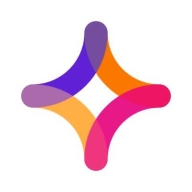

Jitterbit Harmony and AWS Database Migration Service are competing in enterprise data integration and migration. Jitterbit Harmony is favored for its pricing and support, while AWS Database Migration Service leads in feature set, justifying its cost.
Features: Jitterbit Harmony provides effective integration with both cloud and on-premises applications using various agents for real-time processing, an intuitive user interface, and pre-built Salesforce connectors. AWS Database Migration Service offers robust data migration with minimal downtime, schema conversion tools, and change data capture capabilities for continuous data replication.
Room for Improvement: Jitterbit Harmony could enhance its data mapping interface, improve scalability options, and provide advanced scheduling capabilities. AWS Database Migration Service would benefit from simplified pricing models, better real-time monitoring tools, and enhanced support for non-relational databases.
Ease of Deployment and Customer Service: Jitterbit Harmony offers a streamlined deployment process with satisfactory customer support backed by thorough documentation. AWS Database Migration Service provides an easy deployment through AWS Management Console with reliable support, focusing on ease of use within the AWS ecosystem.
Pricing and ROI: Jitterbit Harmony provides competitive pricing with a straightforward subscription model, ensuring effective ROI due to its integration capabilities. AWS Database Migration Service has a more complex pricing structure but delivers solid ROI through its powerful data migration features and value in database migration efficiency.
I can specify savings of around 40 to 60%.
I am happy with the technical support from AWS.
When working with AWS GovCloud, we often did not get an answer in time because AWS seemed more focused on the commercial side.
Even if there was a failure, we could catch it and rerun it.
While scalability is good, latency exists due to our business nature.
AWS's scalable nature involves a human approach, meaning it is not auto-scalable.
For DMS version upgrades, we schedule downtime during business hours so that midnight workloads are not interrupted and morning business can run smoothly.
DMS works within AWS ecosystem, but they also have to look for third party solutions. Now Snowflake is a bigger player, or Databricks.
Sometimes, those who implement the service face problems and resolve it, but I may not even know what problems they faced.
The scalability option is another valuable feature because AWS provides its own compute behind it, so I can scale up and scale down at any given point.
You can copy the database at first without impacting your current database, and then use CDC to copy incremental changes.
AWS offers a way to build jobs that are scalable, expandable for new and current tables, and can be deployed quickly.
| Product | Market Share (%) |
|---|---|
| AWS Database Migration Service | 11.1% |
| Jitterbit Harmony | 1.3% |
| Other | 87.6% |


| Company Size | Count |
|---|---|
| Small Business | 8 |
| Midsize Enterprise | 8 |
| Large Enterprise | 17 |
| Company Size | Count |
|---|---|
| Small Business | 8 |
| Midsize Enterprise | 3 |
| Large Enterprise | 1 |
AWS Database Migration Service, also known as AWS DMS, is a cloud service that facilitates the migration of relational databases, NoSQL databases, data warehouses, and other types of data stores. The product can be used to migrate users' data into the AWS Cloud or between combinations of on-premises and cloud setups. The solution allows migration between a wide variety of sources and target endpoints; the only requirement is that one of the endpoints has to be an AWS service. AWS DMS cannot be used to migrate from an on-premises database to another on-premises database.
AWS Database Migration Service allows users to perform one-time migrations, as well as replications of ongoing changes to keep sources and targets in sync. Organizations can utilize the AWS Schema Conversion Tool to translate their database schema to a new platform and then use AWS DMS to migrate the data. The product offers cost efficiency as a part of the AWS Cloud, as well as speed to market, flexibility, and security.
The main use cases of AWS Database Migration Service include:
AWS Database Migration Service Components
AWS Database Migration Service consists of various components which function together to achieve users’ data migration. A migration on AWS DMS is structured in three levels: a replication instance, source and target endpoints, and a replication task. The components include the following actions:
AWS Database Migration Service Benefits
AWS Database Migration Service offers its users a wide range of benefits. Among them are the following:
Reviews from Real Users
Vishal S., an infrastructure lead at a computer software company, likes AWS Database Migration Service because it is easy to use and set up.
Vinod K., a data analyst at AIMLEAP, describes AWS DMS as an easy solution to save and extract data.
Jitterbit Harmony offers an advanced integration platform that simplifies data transformation, helps users quickly connect apps, and automates workflows, streamlining complex business processes efficiently.
Designed to meet the high demands of modern businesses, Jitterbit Harmony enables seamless integration across cloud and on-premise environments. By leveraging its powerful tools and user-friendly design, users can accelerate innovation, reduce operational costs, and enhance productivity. It bridges the gap between traditional and emerging technologies, ensuring organizations can adapt quickly to market changes and remain competitive.
What are the key features of Jitterbit Harmony?Jitterbit Harmony finds its application across numerous industries, from enhancing data integration in the healthcare sector to optimizing supply chain logistics in manufacturing. It supports financial institutions by improving transaction processing and facilitates real-time data connectivity in retail environments, making it a versatile choice for diverse industries looking to innovate rapidly.
We monitor all Cloud Data Integration reviews to prevent fraudulent reviews and keep review quality high. We do not post reviews by company employees or direct competitors. We validate each review for authenticity via cross-reference with LinkedIn, and personal follow-up with the reviewer when necessary.